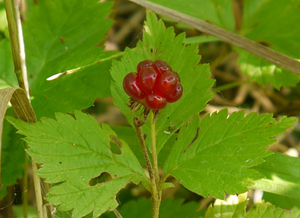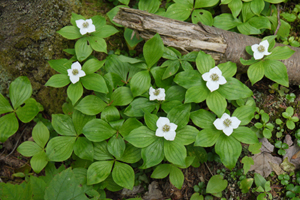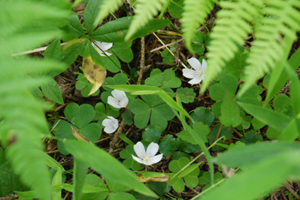
Fragaria virginiana-Common Strawberry: small but extremely tasty. The dried leaves make a pleasant tea that the first nations people used as a nerve tonic
We have grown and harvested medicinal and food plants for more than ten years. In this workshop you will learn how to identify, harvest and transform medicinal and edible food plants that grow on our land in the Appalachian Mountains (zone 4). The class will harvest and prepare a meal using plants from the forest.
The principle activities and topics covered are:
- Introduction to the principle references for identification for the plants in our region
- Methods of observation and identification
- Examining the growth cycles and harvest period of the plants
- Harvesting in an ecological manner
- Ways to make medicinal products
- How to cook with the plants
- Group cooking session and meal

Abies balsamea-Balsam Fir: The young shoots make a delicious tea that can also be used to make syrup or candies. The tea is traditionally used for general fatigue and colds, coughs and asthma

Rubus pubescens-Ronce/Catherinette: Tasty raspberry fruit. The dried leaves are surprisingly charming used as a lightly fruity flavoring agent in desserts, rice and meat dishes. The astringent leave tea can be used as a wash for sores and the root tea has many uses among them being a “female” tonic

Cornus canadensis-Bunchberry: The weak flavored berries can be eaten raw or made into a pudding. The leaves are traditionally used to relieve aches and pains.

Oxalis montana-Wood Sorrel: The sour leaves are an excellent addition to salad or can be made into a refreshing drink.

You must be logged in to post a comment.